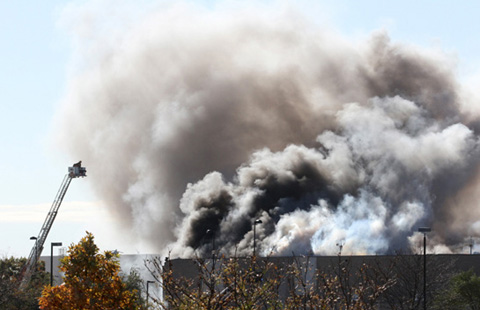Tsunami evacuees caught in $30 billion money trap
Updated: 2014-10-31 10:37
(Agencies)
|
|||||||||
CLOSED FUNDING LOOP
Much of the reconstruction cash has ended up on the ledger of 77 Bank in Sendai, some 50 kilometers (30 miles) west of Ishinomaki. Government deposits at 77 Bank, the region's largest lender, have jumped four-fold to almost $17 billion in the past three years as reconstruction money flooded in, the bank said.
Yoshikazu Onodera, a 77 Bank executive, said the rapid inflow of deposits has been a challenge for the bank to manage since the money could be withdrawn on short notice. The solution, said Onodera, has been to invest in short-term government bonds. As a result, 77 Bank's government bond holdings have risen two and a half times to $20 billion since 2011.
Like 77 Bank, other regional lenders have also ploughed funds into Japanese government bonds, creating a closed loop of financing. By buying government bonds, the banks' investments are essentially helping to fund the borrowing that the government undertook to make the disaster-related allocations in the first place. The central government issued $130 billion worth of reconstruction bonds in the three years after the disaster.
The unspent funds sitting in bank deposits also come at a cost to Tokyo. The government is under mounting pressure to cut a public debt load that is more than twice as large as annual economic output.
Bank officials said they did not expect the money to be withdrawn soon because building projects face further delays. "It's almost certain reconstruction efforts will not be completed within the national government's five-year period," said Ryutaro Katsube, a spokesman for the Bank of Iwate. "Municipalities are already asking for extensions."
Forging consensus among residents over reconstruction plans "is a time-consuming process," said Kitamura of the Reconstruction Agency, which is responsible for the disbursement of $20 billion out of the $50 billion allocated directly to local governments. "This is the result of going through the necessary process."
Separate from the money allocated directly to the prefectures, the central government has poured $140 billion into disaster-relief and reconstruction projects, including emergency loans to small- and medium-sized businesses hit by the tsunami.
PERMANENT HOMES
In the Ishinomaki suburb of Hebita where Keiko Abe has been told her new home will be ready by spring, six workers pumped water out of a construction site on a mid-September afternoon after heavy rain had swamped the area. The foundations have been laid for some homes but there were few signs of building activity. Several cranes and trucks stood idle next to piles of sand and gravel.
A group of women sitting around a wooden table in a nearby evacuee community, eating pickled onions and cake, discussed their predicament. "We feel abandoned and forgotten," said Mitsue Sasaki, 69, who has been living in a temporary home for three years. "They think they can keep us here forever."
"I was allocated a flat, but so what," said Mitsuko Muramatsu, 67, an ex-tax office official. "Right now it's a cloud, it's an empty space."
Mayor Kameyama, 72, a former chemistry professor, is concerned with the mental health of the evacuees. "I'm worried that many people are becoming weak and depressed," he said, sitting in a deep armchair in his office. "If they don't stay healthy and lose the will to move to a new place, it will be a huge problem."
The government's five-year reconstruction plan was built on unrealistic assumptions, said Yoshikiyo Shimamine, the chief economist at Dai-ichi Life Research Institute in Tokyo. "Given bottlenecks such as labor shortages and material cost rises and difficulties in getting consensus among residents who are relocated, reconstruction budgets are not something that can be spent within five years," he said.
Officials in Ishinomaki, home to 150,000 people, say spending the more than $4 billion in reconstruction aid has proven tough. With all of the city-owned land having been designated for temporary housing after the tsunami, the local government had to negotiate the purchase of an additional 9,000 plots to build permanent homes, the reconstruction office's Oka said. That inflated the price of a plot of land in Ishinomaki by 15 percent last year, the biggest jump anywhere in Japan.
Before the city could buy land, it had to track down the legal owners. That proved tedious, said Oka. Officials discovered that in many instances, properties had been passed down without proper inheritance procedures.
Most Viewed
Editor's Picks

|

|

|

|

|

|
Today's Top News
Consensus sought with US on governance of Internet
US experts hope China joins trade partnership
WB report ranks China on business-friendly rules
China to join pro football wars
Halloween haunts China as popularity grows
Mixed bag for China as US Fed ends QE stimulus
Apple's Tim Cook says 'proud to be gay'
Conference conducive to building consensus on Afghanistan
US Weekly

|

|
















